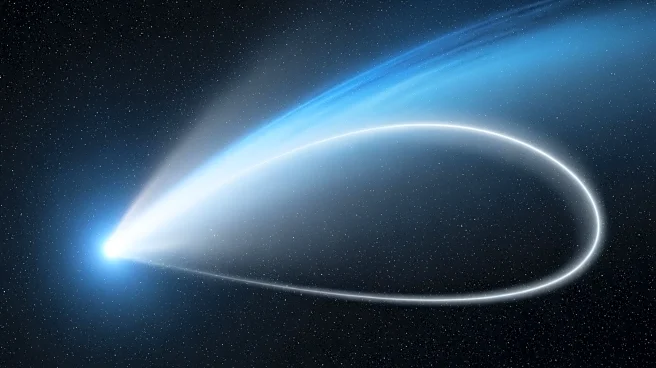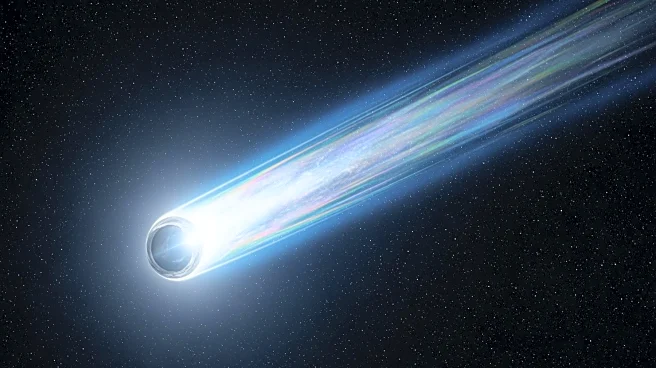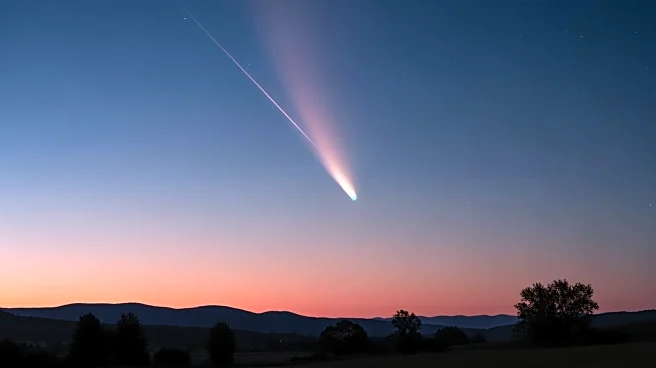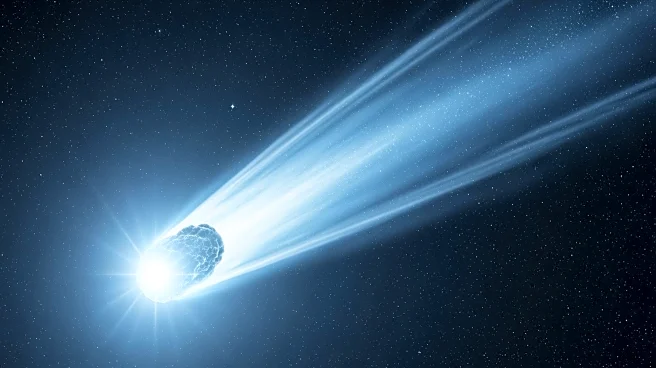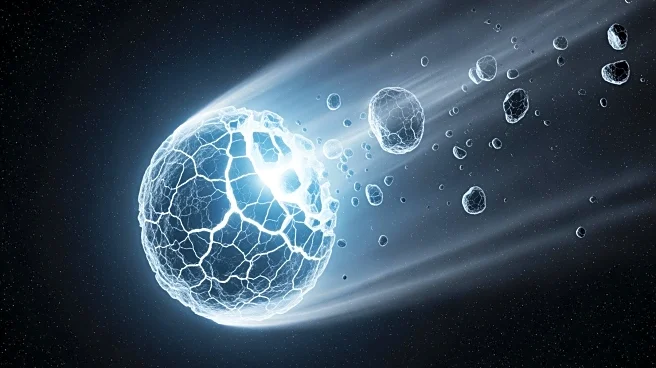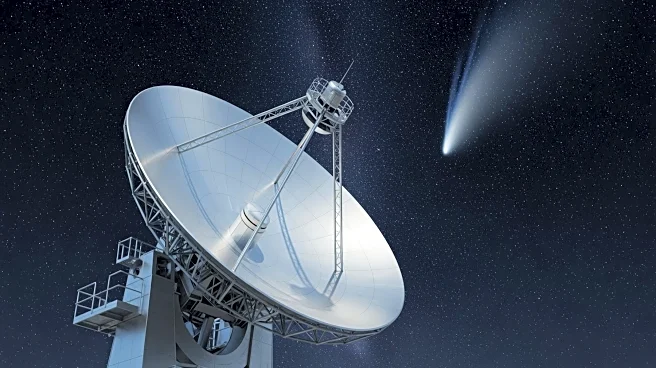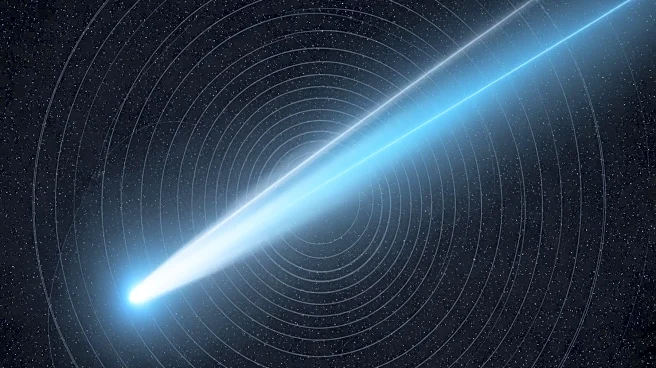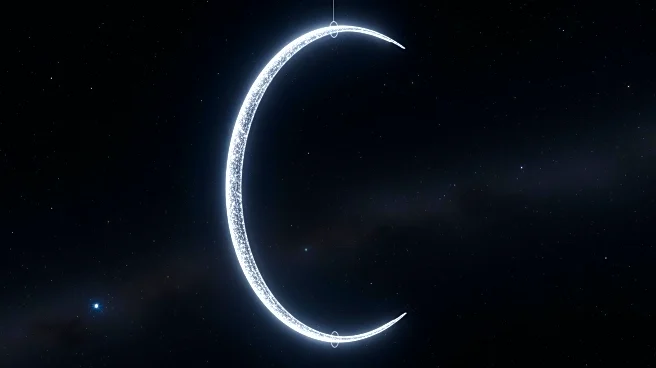What's Happening?
The interstellar comet 31/ATLAS has exhibited a surprising resurgence of its ion tail, which had previously vanished after passing near the Sun. The Virtual Telescope Project captured new images showing
the tail as longer, brighter, and more structured than before. This development adds a new twist to the comet's journey, which has intrigued astronomers due to its unusual behavior. Harvard astrophysicist Avi Loeb noted that about 13% of the comet's mass should appear as a tail, yet it was not visible earlier. The comet's tail reappearance is a significant observation in understanding the dynamics of interstellar comets.
Why It's Important?
The reappearance of 31/ATLAS's tail is crucial for astronomers studying interstellar objects, as it provides insights into the behavior and composition of such comets. Understanding these phenomena can help scientists learn more about the processes affecting cometary bodies as they travel through space. This knowledge is essential for predicting the behavior of other interstellar objects and contributes to the broader field of astrophysics. The comet's tail dynamics may also offer clues about the gravitational interactions and outgassing processes that influence cometary structures.
What's Next?
Further observations and studies are likely to focus on the comet's tail dynamics and its interaction with solar radiation. Astronomers may use additional telescopic resources to monitor changes in the comet's structure and composition. These studies could lead to a better understanding of the physical processes governing interstellar comets and their tails. The findings may also inform future missions aimed at exploring similar celestial bodies.
Beyond the Headlines
The comet's behavior raises questions about the nature of interstellar travel and the forces that shape celestial objects. The study of 31/ATLAS could lead to advancements in cometary science and enhance our understanding of the solar system's boundaries. Ethical considerations may arise regarding the allocation of resources for space exploration and the prioritization of scientific research.
